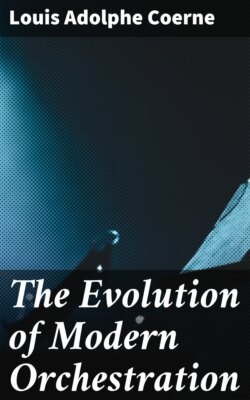Читать книгу The Evolution of Modern Orchestration - Louis Adolphe Coerne - Страница 32
На сайте Литреса книга снята с продажи.
PART II.—THE CLASSIC ERA. CHAPTER V.
BACH, HÄNDEL, AND THEIR CONTEMPORARIES.
ОглавлениеTable of Contents
An attempt to portray in a felicitous manner the progress of orchestration during the classic era is apt to carry one between Scylla and Charybdis. On the one hand lies the temptation to enlarge upon the biography and extraneous achievements of the great masters, on the other, the danger of superficiality. Minuteness of detail as aimed at in the previous chapter when the beginnings of orchestration rested in the hands of a comparatively small number of men is here incompatible, in view of the desire for conciseness. Moreover, extended panegyrics would of necessity consist of but a flatulent plagiarism upon the voluminous and admirably written works already in existence. The safe course to pursue is therefore to survey the era as a whole in its relation to the orchestra, merely touching upon a very few of the distinctive characteristics peculiar to the most celebrated exponents.
Naturally one turns to that unbroken chain of Teutonic peers, beside whom all contemporary efforts were puny. Of these six,—Bach, Händel, Gluck, Haydn, Mozart, Beethoven, it might be said that only the last three were direct evolutionists of the symphonic orchestra; for Gluck was absorbed in exploring the dramatic characteristics of instrumentation, and as to Bach and Händel, in spite of their titanic contributions to music itself, neither of them can be regarded as an orchestral innovator, though this statement savors of heresy.[8]
